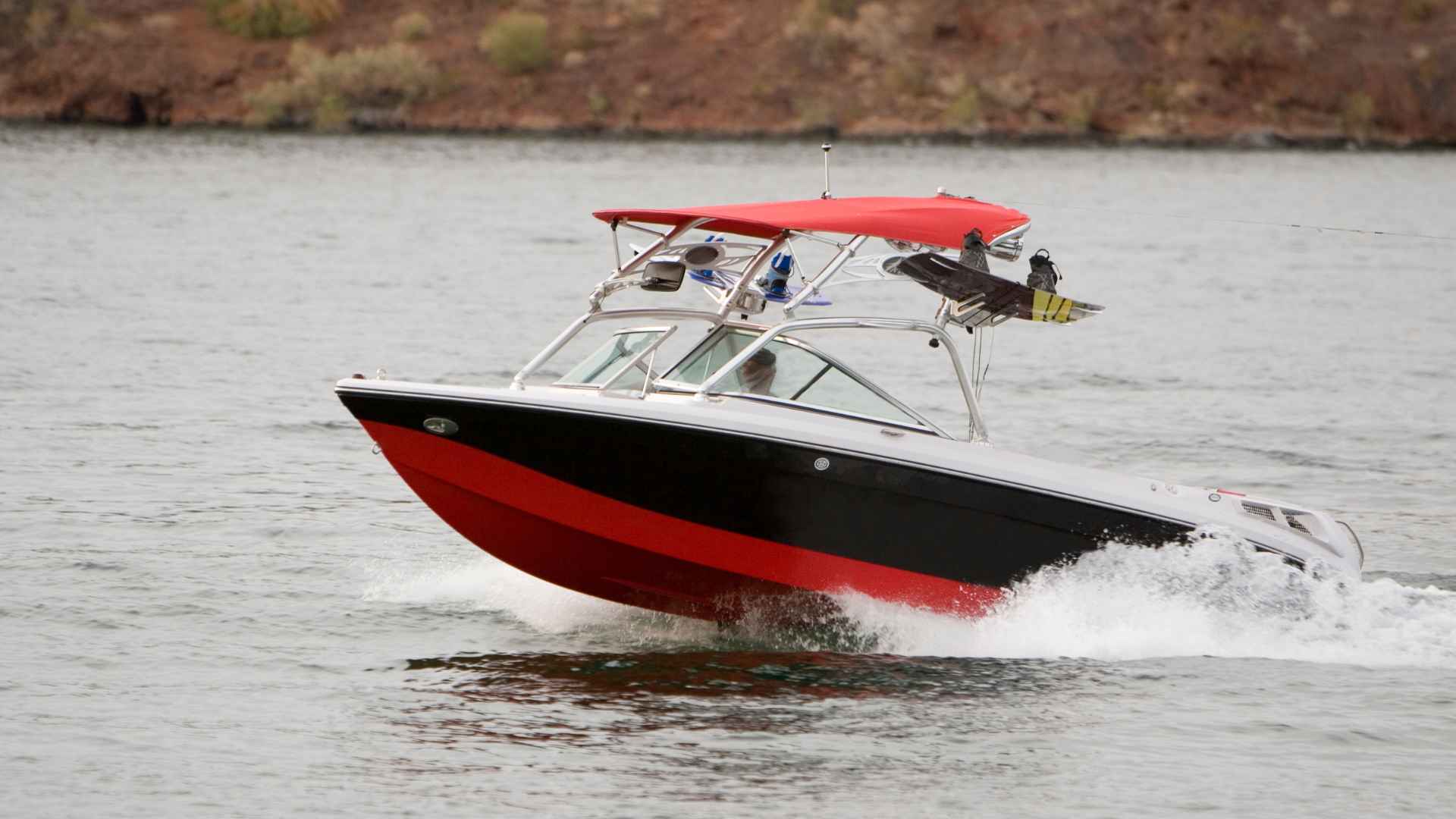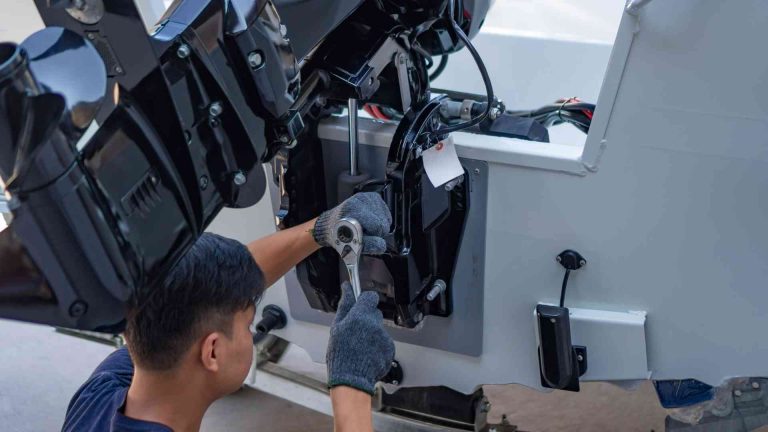How Much Does A Pontoon Boat Weigh
Discover pontoon boat weight factors, from dry to wet weight, impacting towing and performance. Learn about sizes, accessories, and more in this guide.
Pontoon boats are a popular choice for leisurely cruises, fishing trips, and watersport adventures due to their stability, spacious decks, and versatility. However, one critical aspect that every pontoon boat owner or prospective buyer must understand is the boat’s weight. Knowing how much a pontoon boat weighs is essential for safe towing, storage, performance, and compliance with legal regulations. This comprehensive guide explores pontoon boat weights, the factors influencing them, their impact on performance and towing, and practical tips for managing weight effectively. With weights ranging from 1,000 pounds for compact models to over 8,000 pounds for luxury giants, understanding these variables ensures a safer and more enjoyable boating experience.
Understanding Pontoon Boat Weight Basics
The weight of a pontoon boat is a foundational piece of information that affects nearly every aspect of its operation. Let’s break down the key weight-related terms:
- Dry Weight: This is the weight of the pontoon boat without fuel, passengers, or gear. It represents the base weight of the hull, deck, and basic components as provided by the manufacturer. For example, a typical 22-foot pontoon boat has a dry weight of around 2,200 pounds.
- Wet Weight: Wet weight includes the dry weight plus fuel, passengers, and all gear onboard. A full fuel tank (e.g., 30 gallons at 6.1 pounds per gallon) can add approximately 183 pounds, while passengers and cargo can add 800–1,000 pounds or more, depending on the load.
- Package Weight: This is the combined weight of the boat (wet or dry) and its trailer. A typical pontoon trailer weighs around 1,200 pounds, so a 2,200-pound dry-weight pontoon might have a package weight of approximately 3,400–3,700 pounds before adding fuel and gear.
- Maximum Weight Capacity: This refers to the maximum additional weight (passengers, gear, and supplies) a pontoon boat can safely carry beyond its dry weight. Most pontoons have a capacity of around 2,000 pounds, though this varies by model.
The average pontoon boat’s dry weight falls between 2,000 and 3,000 pounds, but this range can shift dramatically based on size, materials, and features. Small pontoons may weigh as little as 1,000 pounds, while large luxury models can exceed 8,000 pounds.
Factors Affecting Pontoon Boat Weight
Several factors influence a pontoon boat’s weight, making each vessel unique. Understanding these factors helps you estimate weight accurately and choose a boat that aligns with your towing and performance needs.
Size and Length
The length of a pontoon boat is one of the most significant factors affecting its weight. A general rule of thumb is that pontoon boats weigh approximately 100–120 pounds per foot of length. For example:
- A 16-foot pontoon weighs around 1,600–1,920 pounds.
- A 20-foot pontoon weighs around 2,000–2,400 pounds.
- A 24-foot pontoon weighs around 2,400–2,880 pounds.
However, this estimate can vary by up to 20% depending on the boat’s design and features.
Construction Materials
The materials used in a pontoon boat’s construction significantly impact its weight:
- Aluminum: Most pontoon tubes and decks are made of aluminum due to its lightweight yet durable properties. Aluminum pontoons are lighter than those made of steel or fiberglass.
- Fiberglass: Some pontoons incorporate fiberglass components, such as consoles or deck elements, which add strength but increase weight.
- Wood vs. Aluminum Decking: Aluminum decking is lighter than traditional wood decking, reducing overall weight.
Motor Size and Type
The outboard motor is a substantial contributor to a pontoon boat’s weight. Motor weight increases with horsepower:
- A 90HP motor weighs approximately 370 pounds.
- A 115HP motor weighs around 400 pounds.
- High-performance motors (e.g., 300HP) can weigh 600 pounds or more.
Boats designed for watersports or high speeds often feature larger, heavier motors, significantly increasing the total weight.
Accessories and Features
Additional features and accessories can add hundreds of pounds to a pontoon boat’s weight. Common add-ons include:
- Bimini Tops: 40–70 pounds, providing shade but adding weight.
- Fishing Chairs: 20–50 pounds each, depending on design.
- Live Wells: 100–200 pounds when filled.
- Watersports Towers: 100–250 pounds, ideal for wakeboarding or skiing.
- Sound Systems: High-end audio setups can add 50–100 pounds.
- Premium Seating and Lounges: Luxury furniture, such as plush recliners, adds significant weight.
- Built-in Grills or Refrigerators: These can add 50–150 pounds each.
Fuel
Fuel weight is often overlooked but can be substantial. A 30-gallon tank, common in mid-sized pontoons, adds approximately 183 pounds when full (6.1 pounds per gallon). Larger luxury models with 60-gallon tanks can add over 360 pounds.
Weight Ranges by Boat Size
Pontoon boat weights vary significantly based on their size and intended use. Below is a breakdown of weight ranges by size category, along with their ideal applications:
Small Pontoon Boats (12–19 feet)
- Dry Weight: 1,000–2,000 pounds
- Ideal For: Casual fishing, small groups, or calm waters
- Benefits: Easy to tow with a standard SUV or light truck, requires a smaller motor (e.g., 50–90HP), and is simple to store.
- Examples:
- Sun Tracker Bass Buggy 16 DLX: 1,680 pounds
- Qwest Adventure 818 VX Fish: 1,800 pounds
- Tahoe GT Cruise 18′: 2,000 pounds
Medium Pontoon Boats (20–35 feet)
- Dry Weight: 2,000–3,500 pounds
- Ideal For: Families, group outings, fishing, or leisure cruises
- Benefits: Balances space, comfort, and transportability. Suitable for towing with mid-sized trucks or SUVs with a towing capacity of 5,000–7,000 pounds.
- Examples:
- Bennington 22 SSX: 2,600 pounds
- Harris Cruiser 230: 3,000 pounds
- Premier Sunsation 220: 3,200 pounds
Large Pontoon Boats (Over 35 feet)
- Dry Weight: 3,500–8,000 pounds
- Ideal For: Large groups, events, or commercial use (e.g., tour companies)
- Benefits: Offers ample space for passengers and luxury amenities but requires heavy-duty towing vehicles (10,000 pounds or more capacity) and specialized trailers.
- Examples:
- Suntracker Regency 254XP3: 3,300 pounds (dry), 5,695 pounds (package)
- Avalon Catalina DRL (larger models): Up to 6,000 pounds
The following table summarizes pontoon boat weights by size and model:
| Boat Model | Length | Dry Weight (lbs) | Package Weight (lbs) |
|---|---|---|---|
| Avalon Eagle | 16 ft | 1,350 | ~2,550 |
| Avalon Venture Fish | 14 ft | 1,382 | ~2,580 |
| Lowe SS210 | 20 ft | 1,860 | ~3,060 |
| Sweetwater SW 2086 | 22 ft | 1,773 | ~2,973 |
| Avalon Catalina DRL | 24 ft | 2,050 | ~3,250 |
| Suntracker Regency 254XP3 | 27 ft | 3,300 | 5,695 |
| G3 Suncatcher X22RF | 22 ft | N/A | 3,600 |
Comparing Different Pontoon Boat Types
Pontoon boats come in various types, each designed for specific activities, which affects their weight. Below is a comparison of common pontoon boat types:
- Standard Pontoon Boats:
- Weight: ~2,100 pounds (dry)
- Features: Basic amenities for casual cruising.
- Use Case: Affordable and versatile for general recreational use.
- Leisure/Entertainment Pontoons:
- Weight: ~2,100–2,500 pounds
- Features: Additional seating, tables, and entertainment options like sound systems or bars.
- Use Case: Ideal for social gatherings and family outings.
- Sundeck Pontoons:
- Weight: ~3,115 pounds
- Features: Includes a second deck or sundeck for extra space.
- Use Case: Perfect for large groups or sunbathing.
- Fishing Pontoons:
- Weight: 1,800–2,100 pounds
- Features: Fishing-specific amenities like rod holders, live wells, and specialized chairs.
- Use Case: Designed for anglers seeking functionality.
- Performance/Sport Pontoons:
- Weight: 3,000–3,500 pounds or more
- Features: High-powered motors, reinforced construction, and watersports towers.
- Use Case: Built for speed and watersports like wakeboarding or tubing.
The following Mermaid chart illustrates the weight ranges of different pontoon boat types:

Calculating Your Pontoon Boat’s Weight
Estimating your pontoon boat’s weight involves combining several components. Here’s a step-by-step approach:
- Start with Dry Weight: Check the manufacturer’s specifications for the boat’s dry weight. For example, a 22-foot pontoon might have a dry weight of 2,200 pounds.
- Add Motor Weight: Include the weight of the outboard motor (e.g., 400 pounds for a 115HP motor).
- Include Fuel Weight: Multiply the fuel tank capacity by 6.1 pounds per gallon. A 30-gallon tank adds 183 pounds.
- Account for Accessories: Add the weight of accessories like Bimini tops (40–70 pounds), watersports towers (100–250 pounds), or sound systems (50–100 pounds).
- Estimate Passenger and Gear Weight: A family of four with gear might add 800–1,000 pounds.
- Include Trailer Weight: Add the trailer’s weight, typically 1,200 pounds for a standard pontoon trailer.
For example, a 22-foot pontoon boat might have:
- Dry Weight: 2,200 pounds
- 115HP Motor: 400 pounds
- Full 30-Gallon Fuel Tank: 183 pounds
- Accessories (Bimini top, sound system): 150 pounds
- Passengers and Gear: 800 pounds
- Trailer: 1,200 pounds
- Total Package Weight: ~4,933 pounds
Always verify the manufacturer’s specifications for precise figures, as the length x 100 rule can be off by 20% or more, especially for luxury or performance models.
Impact of Weight on Performance and Towing
A pontoon boat’s weight directly influences its performance on the water and towing requirements:
- Performance:
- Heavier Boats: Provide a smoother ride in choppy waters due to increased stability but require more powerful motors to achieve higher speeds. They consume more fuel and may be less maneuverable.
- Lighter Boats: Are more fuel-efficient and easier to maneuver but may feel less stable in rough conditions.
- Towing:
- The towing vehicle’s capacity must exceed the boat’s total package weight, including the trailer, fuel, and gear. For example, a 4,933-pound package weight requires a vehicle with at least a 5,500-pound towing capacity for safety.
- Trailer selection should match the boat’s maximum wet weight. A trailer rated for 5,000 pounds is suitable for most mid-sized pontoons.
- Fuel Efficiency: Heavier boats require more power, increasing fuel consumption. A 2021 study on pontoon performance noted that a 3,000-pound boat may consume 10–20% more fuel than a 2,000-pound model at similar speeds.
Weight Distribution and Its Impact
Proper weight distribution is critical for safe and efficient pontoon boat operation:
- Balanced Loading: Distribute passengers and gear evenly across the deck to maintain stability. Uneven weight can cause the boat to list, affecting handling and increasing the risk of capsizing.
- Bow Weight: Overloading the bow can impair steering and increase the risk of swamping in rough waters. Keep heavier items toward the center or stern.
- Fuel Tank Placement: Most pontoons have fuel tanks positioned for optimal balance, but a full tank (180–300 pounds) can shift the center of gravity.
- Motor Weight: Outboard motors, ranging from 100 to 700 pounds, are mounted at the stern, affecting balance. Larger motors may require additional counterweighting forward.
Proper weight distribution enhances handling, fuel efficiency, and safety, particularly at higher speeds or in challenging conditions.
Towing Considerations Based on Weight
Safe towing requires careful consideration of the pontoon boat’s total package weight:
- Trailer Selection: Choose a trailer rated for the boat’s maximum wet weight, including accessories and fuel. Most pontoon trailers are rated for 3,000–5,000 pounds, but luxury models may require custom trailers.
- Vehicle Compatibility: Ensure your vehicle’s towing capacity exceeds the package weight by at least 2,500 pounds for safety. For example:
- A 4,000-pound package requires a vehicle with a 6,500-pound towing capacity (e.g., Ford F-150, Chevrolet Silverado 1500).
- A 6,000-pound package requires a heavy-duty truck with a 10,000-pound capacity.
- Weight Distribution Hitches: These improve towing stability for heavier loads, reducing sway and enhancing control.
- Brake Requirements: Many states require trailer brakes for loads over 3,000 pounds. For example, Florida mandates brakes for trailers exceeding this weight, and non-compliance can result in fines or towing restrictions.
The following table outlines towing vehicle requirements for different pontoon package weights:
| Package Weight (lbs) | Recommended Towing Capacity (lbs) | Suitable Vehicles |
|---|---|---|
| 3,000–4,000 | 5,500–6,500 | Mid-sized SUVs, Light Trucks |
| 4,000–5,000 | 6,500–7,500 | Ford F-150, Chevrolet Silverado 1500 |
| 5,000–6,000 | 7,500–8,500 | Toyota Tundra, Dodge Ram 1500 |
| 6,000–8,000 | 10,000+ | Heavy-Duty Trucks |
Tips for Managing Pontoon Boat Weight
To optimize your pontoon boat’s performance and ensure safe towing, consider these practical tips:
- Check Manufacturer Specifications: Always refer to the boat’s capacity plate or manual for accurate dry weight, maximum weight capacity, and horsepower limits.
- Weigh Your Boat: Visit a CAT scale or weigh station to determine the exact package weight, including the trailer, fuel, and gear.
- Minimize Unnecessary Gear: Avoid overloading with non-essential items to keep the wet weight manageable.
- Distribute Weight Evenly: Place heavier items centrally and avoid overloading the bow or stern.
- Upgrade Trailer Components: For heavier pontoons, consider a tandem-axle trailer with brakes for added safety.
- Maintain Towing Equipment: Regularly inspect trailer tires, brakes, and hitches to ensure they can handle the load.
- Plan for Fuel: Tow with a near-empty fuel tank to reduce weight, and refuel at your destination.
Advanced Considerations for Pontoon Boat Weight
For experienced boaters or those customizing their pontoons, advanced factors can further influence weight:
- Tube Design: Triple-tube pontoons (tritoons) are heavier than dual-tube designs but offer better stability and performance. A tritoon may add 300–500 pounds compared to a similar-sized dual-tube model.
- Deck Materials: Aluminum decking reduces weight compared to wood, improving fuel efficiency and towing ease.
- Console Options: Center consoles add 50–100 pounds but enhance control. Dual consoles add more weight but provide additional storage.
- Performance Packages: Features like underdeck shields or lifting strakes improve speed and handling but add 100–200 pounds.
Pontoon Boat Weight and Pricing
The weight of a pontoon boat often correlates with its features and price. Below is a table of popular pontoon boat models, their weights, and approximate price ranges:
| Boat Model | Length | Dry Weight (lbs) | Approx. Price (USD) |
|---|---|---|---|
| Sun Tracker Bass Buggy 16 | 16 ft | 1,680 | $15,000–$20,000 |
| Bennington 22 SSX | 22 ft | 2,600 | $35,000–$50,000 |
| Harris Cruiser 230 | 23 ft | 3,000 | $40,000–$60,000 |
| Suntracker Regency 254XP3 | 27 ft | 3,300 | $60,000–$80,000 |
| Avalon Catalina DRL | 24 ft | 2,050 | $50,000–$70,000 |
Prices vary based on customization, accessories, and regional dealers. For accurate pricing, contact manufacturers or visit their websites.
Conclusion
Understanding how much a pontoon boat weighs is critical for safe towing, storage, and on-water performance. Most pontoon boats have a dry weight of 2,000–3,000 pounds, but this can range from 1,000 pounds for small models to over 8,000 pounds for luxury tritoons. When factoring in fuel, passengers, gear, and trailers, package weights typically range from 3,000 to 6,000 pounds. By considering factors like size, materials, motors, and accessories, you can accurately estimate your boat’s weight and ensure it aligns with your towing vehicle’s capacity and intended use. Proper weight management, including balanced loading and regular equipment checks, enhances safety and enjoyment on the water. Whether you’re cruising with family, fishing, or engaging in watersports, knowing your pontoon boat’s weight is the key to a seamless boating experience.
Share How Much Does A Pontoon Boat Weigh with your friends and Leave a comment below with your thoughts.
Read Do Outboard Motors Have Alternators and Charge Batteries? until we meet in the next article.






